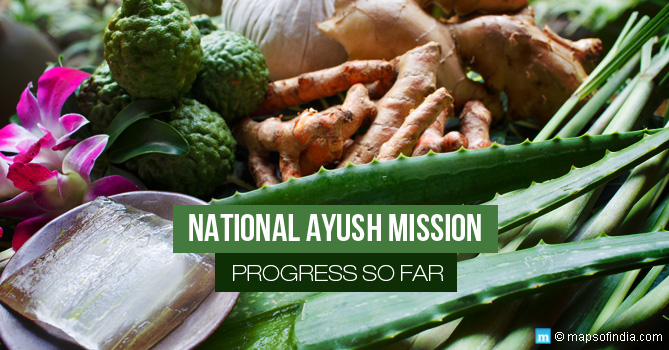The Indian government had announced the National Ayush Mission (NAM) in 2014, under which naturopathy and yoga-based treatment will be made available in the rural areas. The government had provided its approval for almost 161 such wellness centres across the country. The National Ayush Mission (NAM) is being administered by the Ministry of Ayush that will provide grants and aids to the state governments. This will be done as per the State Annual Action Plan (SAAP) of the respective states. As of now, the government does not plan to spread the whole programme across the country. However, there is a provision that such centres can be set up in primary health centres (PHC), district hospitals, and community health centres (CHCs).
Plans of Upgradation
The union government is also planning to upgrade dispensaries and hospitals that are dedicated exclusively to Ayush treatment programmes. It will also start the Ayush Gram programme whereby a block or a village will be selected. Following selection, the block or village will adopt and implement the Ayush way of life and healthcare treatments. In these villages, techniques such as behavioural change communication will be used to implement the Ayush way of life. As part of the programme, health workers are supposed to be trained in local villages so that they are able to identify and use local herbs as medicines in various ailments. Ayush health services will also be provided in these villages.
Setting up of Hospitals
The central government was also supposed to set up 14 dedicated Ayush hospitals with 50 beds each. This is expected to be done in nine states. The union administration was expected to spend INR 330 lakh in 2014-15 and INR 2014.56 lakh in 2015-16 for setting up the said hospitals. It is also expected that these hospitals might incorporate the Unani system of medicine as well.
Expenses
In the initial stages, the government was supposed to provide around INR 1.5 crore for maintaining and running the hospitals and INR 10 crore for establishing them. As of now, the Government of India has set up Unani hospitals in Bihar, Tamil Nadu, Delhi, Telangana, Jammu & Kashmir, Uttar Pradesh, Odisha, and Karnataka.
Ayush Education
The National Ayush Ministry has also said that at present, Ayush system of medicine is being taught at 297 Indian Systems of Medicine (ISM) colleges across the country. At the undergraduate level, almost 17,192 students are studying these courses and approximately 3661 are studying the programmes at the postgraduate level.
Better Access to Ayush Services
The Indian government is trying to make sure that people have better access to the services provided under the Ayush programme. Improving the condition of state hospitals that are dedicated to Ayush, making educational establishments’ dealing with Ayush better than before, and building hospitals dedicated to this form of treatment are the long-term objectives.
How can this make a difference?
India is a country that has a rich tradition and heritage of herbal medicine spanning thousands of years in the least. Even now in places such as Kerala – which is renowned the world over for its Ayurveda treatment – such forms of treatment are practiced with great success. India also has an equally rich heritage of Unani treatment. Such treatments are integral to the country’s heritage and moreover, they are much more inclusive than the standard medicinal practices these days in the way that people can easily be trained to identify herbs and know their usage so that they can cure themselves at a primary level.
Secondly, these are much less expensive forms of treatment compared to allopathic medicines that are only getting costlier by the day. This is why the Ayush programme is praiseworthy at so many levels. If rightly implemented, it can make things much easier, especially for people who find it hard to avail conventional treatment for lack of sufficient funds and non-availability of hospitals.






